Have you ever wondered, why do dogs have wet noses? This curious characteristic is more than just a cute trait; it’s a fascinating aspect of canine biology that serves several important purposes. A dog’s nose is not only moist but also plays a crucial role in their ability to smell and interact with the world around them. But is it true that a wet nose means a dog is healthy? Or could it be a sign of something else? In this article, we will explore the intriguing reasons behind this unique feature. From the science of dog senses to the implications of nose moisture, prepare to dive into the captivating world of our furry friends. Did you know that dogs can detect certain smells up to 100,000 times better than humans? This incredible ability is partly due to their wet noses, which help capture scent particles in the air. So, if you’ve ever asked yourself, why do dogs have wet noses, you’re not alone! Join us as we uncover the secrets of this remarkable canine quality and learn why it matters for your pup’s health and happiness. Keep reading to satisfy your curiosity!
The Science Behind Dog Noses: Why Are They Always Wet?
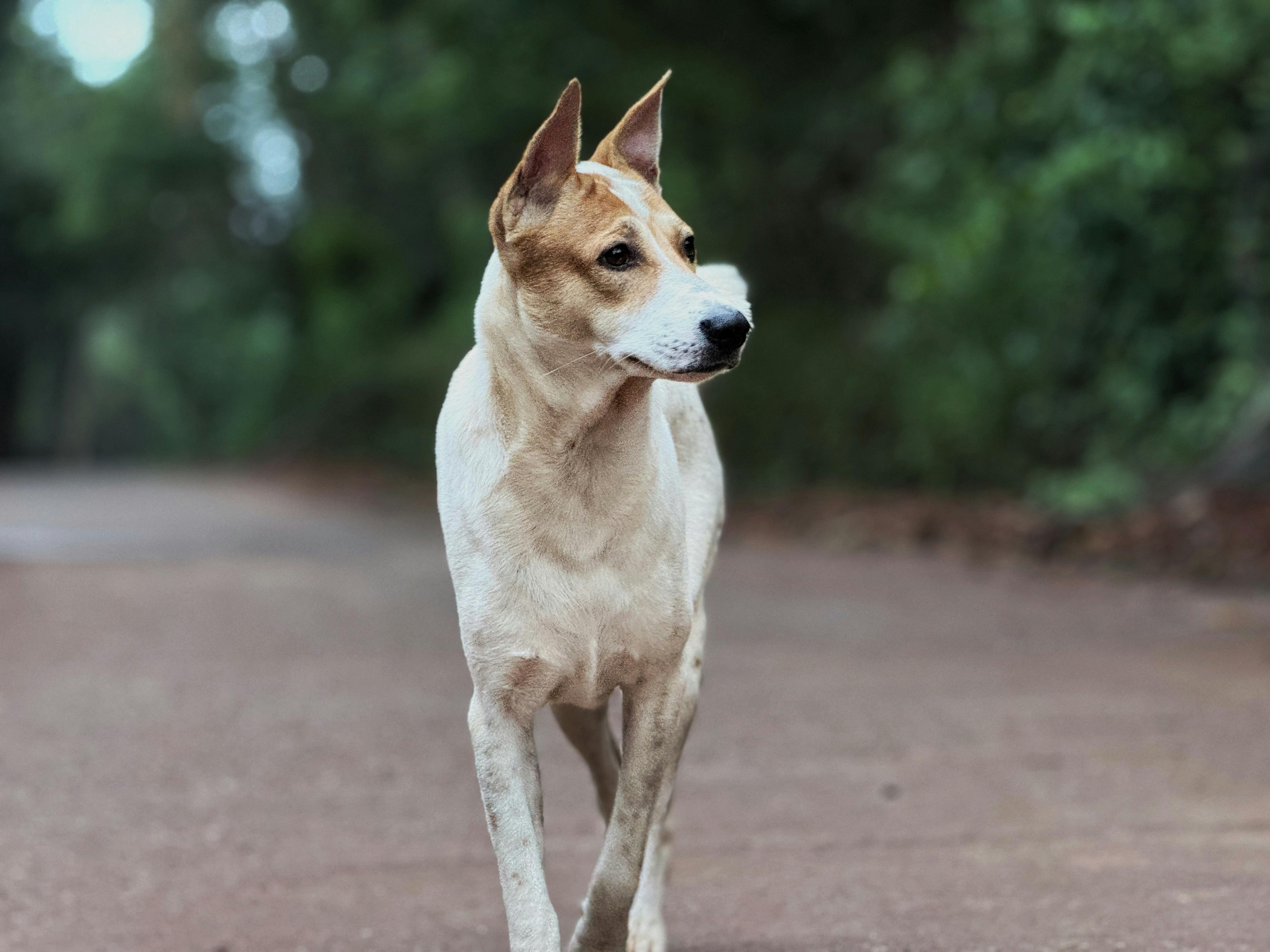
Dogs are often considered man’s best friend, and one of the quirkiest features about them is their wet noses. If you ever wondered why do dogs have wet noses, you’re not alone. The science behind dog noses is pretty fascinating, and it goes beyond just appearance. Let’s dig deeper into why these furry companions have such unique noses and what that wetness means for their health and behavior.
The Anatomy of a Dog’s Nose
Dog noses are made up of several layers, including skin, mucous membranes, and a dense network of blood vessels. The surface of a dog’s nose is covered in a layer of moisture that keeps it cool and can help enhance their sense of smell. The wetness comes from various sources:
- Mucous Glands: These glands produce moisture that helps to keep the nose wet.
- Saliva: When dogs lick their noses, saliva adds to the moisture.
- Environmental Factors: Humidity and temperature also plays a role in how wet a dog’s nose might feel.
This combination of factors ensures that a dog’s nose is always moist, which is essential for their sensory capabilities.
Why are Wet Noses Important?
Wet noses are not just a quirky trait; they serve multiple important functions. Here are some reasons why having a wet nose is beneficial for dogs:
- Enhanced Sense of Smell: Dogs have an extraordinary sense of smell, estimated to be between 10,000 to 100,000 times more sensitive than humans. A wet nose helps to capture scent particles more effectively.
- Thermoregulation: Dogs don’t sweat like humans do. A wet nose helps to cool down their body temperature, especially in warm weather.
- Health Indicator: A dog’s nose moisture can indicate their health status. If a dog’s nose is excessively dry, it could be a sign of dehydration or illness.
The Role of Scent in Dogs
Dogs rely heavily on scent to interact with their environment. Their noses contain up to 300 million scent receptors, compared to a human’s mere 5 million. This remarkable anatomy allows dogs to detect scents and pheromones that are invisible to us. Here’s a comparison of scent detection:
| Feature | Dogs | Humans |
|---|---|---|
| Scent Receptors | ~300 million | ~5 million |
| Sensitivity | 10,000 to 100,000 times more sensitive | Baseline human sensitivity |
| Olfactory Bulb Size | Proportionally larger | Smaller |
Historical Context
Historically, dogs have been bred for specific traits, including their sense of smell. Breeds like Bloodhounds and Beagles have been particularly favored for their olfactory abilities. The evolutionary development of a wet nose may have been naturally selected for its advantages in hunting and tracking. In ancient times, dogs helped humans in hunting and gathering, and their ability to smell prey was crucial for survival.
Dogs and Their Behavior
A dog’s behavior can also be influenced by the condition of their nose. For instance, if a dog is sniffing around with a wet nose, it’s in its natural element. However, if a dog is frequently licking its nose or rubbing it against surfaces, it could indicate anxiety or discomfort. Here are some common behaviors associated with wet noses:
- Curiosity: Dogs explore their environment with their noses. A wet nose can help them gather more information about their surroundings.
- Social Interactions: Dogs often greet each other by sniffing, which is a social behavior that helps them learn more about one another.
- Comfort Seeking: Sometimes, a dog will lick its nose when it’s feeling anxious, as a way of self-soothing.
Practical Tips for Dog Owners
As a dog owner, understanding the importance of a wet nose can help you monitor your dog’s health. Here are some tips to ensure your dog’s nose remains healthy:
- Hydration: Always provide fresh water to keep your dog hydrated.
- Vet Visits: Regular check-ups can help catch any potential health issues early.
- Watch for Changes: If you notice a significant change in your dog’s nose moisture or texture, consult a veterinarian.
In summary, the wet noses of dogs are not just an endearing feature; they play vital roles in their health and behavior. Understanding these mechanisms can help you appreciate your furry friend even more. So, next time you see your dog with its wet nose, remember all the fascinating science behind it!
5 Fascinating Reasons Your Dog’s Nose Is Wet: What It Means for Their Health

If you ever wondered, why do dogs have wet noses, you’re not alone. Many dog owners notice this unique characteristic but often don’t understand its significance. A wet nose is more than just an adorable trait; it actually plays a key role in your dog’s health and well-being. In this article, we will explore 5 fascinating reasons behind those moist noses and what they mean for your furry friend.
1. Sense of Smell
One of the most intriguing reasons for wet noses is its connection to a dog’s incredible sense of smell. Dogs have a remarkable olfactory system that allow them to detect scents much better than humans. A wet nose helps in trapping scent particles from the air, enhancing their ability to sniff out interesting smells.
- Dogs have up to 300 million scent receptors, compared to about 6 million in humans.
- The moisture on their nose helps to dissolve odor molecules, making it easier for dogs to interpret scents.
2. Temperature Regulation
Did you know that a dog’s wet nose also helps regulate its body temperature? Just like humans sweat to cool down, dogs use their noses to manage heat. When the nose is wet, it allows for efficient heat dissipation. This is particularly important when they are excited or playing.
- In hot weather, a dog might pant and keep its nose wet to stay cool.
- A dry nose can indicate overheating or dehydration, so it’s important to monitor your pet’s hydration levels.
3. Health Indicator
Wetness of a dog’s nose can also serve as an indicator of their health. While a wet nose is usually a good sign, changes in its moisture levels can signal underlying health issues.
- A consistently dry or cracked nose may indicate dehydration, illness, or even allergies.
- If the nose is unusually warm and dry, it could be a sign of fever.
Keep an eye on your dog’s nose as part of your regular health checks.
4. Social Communication
Dogs are social creatures, and their noses play a significant role in communication. A wet nose can be a friendly gesture, signaling that your dog is happy and ready to interact.
- Dogs often greet each other by sniffing noses, which helps them gather information about one another.
- The moisture in their noses can also help them pick up pheromones, which are crucial for social interactions among dogs.
5. Evolutionary Trait
Finally, the wet nose is an evolutionary trait that has been passed down through generations. Dogs, as descendants of wolves, have retained this characteristic, which has proven beneficial for their survival.
- Wet noses help in hunting and foraging for food by enhancing their ability to detect prey.
- This characteristic can be traced back to their ancestors, who relied heavily on their sense of smell for survival.
Fun Facts About Dogs’ Noses
- Dogs’ noses are unique, much like human fingerprints. No two dogs have the same nose pattern!
- The color of a dog’s nose can change; for example, many puppies are born with pink noses that darken as they mature.
- Dogs can actually sweat through their noses, although this is not their primary means of cooling down.
What to Do If Your Dog’s Nose is Dry
If you notice that your dog’s nose is dry, here are some steps you can take:
- Hydration: Ensure your dog has access to fresh water at all times.
- Environment: Consider the humidity levels in your home. If it’s too dry, it might affect your dog’s nose.
- Consult a Vet: If the dryness persists, it’s wise to consult with a veterinarian to rule out any underlying health issues.
Understanding why do dogs have wet noses can deepen your bond with your pet. Keeping an eye on their nose can offer crucial clues about their health and happiness. So, the next time you give your dog a pat, remember that wet nose is not just cute, but it’s a sign of a well-functioning and healthy dog. Embrace those little moments with your furry friend, because they are truly fascinating creatures!
Is a Wet Nose a Sign of a Happy Dog? Uncover the Truth!

Many dog owners often wonder, “Is a wet nose a sign of a happy dog?” This question leads to many discussions among pet lovers and even some skeptics. The truth is, while a wet nose can indicate certain things about a dog’s health and emotional state, it is not the sole indicator that a dog is happy. So, let’s uncover the truth about those wet noses and explore the fascinating reasons why dogs have them.
Why Do Dogs Have Wet Noses?
First off, it’s important to understand why dogs’ noses are often wet. Here are a few key reasons:
Thermoregulation: Dogs don’t sweat like humans do. Instead, they rely on their noses to help regulate their body temperature. A wet nose can help them cool down in heat.
Sense of Smell: The moisture on a dog’s nose helps capture scent particles. This makes their sense of smell more acute. A wet nose can enhance a dog’s ability to sniff out things, which is why they are often used in search and rescue missions.
Health Indicator: A wet nose is often associated with a healthy dog. However, it can change based on various factors such as environment, hydration, and health conditions.
Excitement: When dogs are excited or playful, their bodies produce more moisture, making their noses wet. So, if your dog’s nose is wet when you come home, it might just be their way of showing joy.
Comparing Wet and Dry Noses
It’s also useful to compare wet and dry noses. Here are some differences:
Wet Nose:
- Usually cool to the touch
- Often indicates hydration
- Can signify a happy or excited dog
- Enhances sense of smell
Dry Nose:
- Warmer than a wet nose
- Might indicate dehydration or illness
- Can be normal but should be monitored
- May indicate sleepiness or relaxation
Common Myths About Wet Noses
There are several myths surrounding wet noses that might confuse dog owners. Here are a few of them:
A Wet Nose Means a Dog is Sick: This is not true. A dog can have a wet nose while being perfectly healthy. However, if the nose is excessively dry or cracked, it may indicate a problem.
All Dogs Have Wet Noses: Not every dog has the same level of moisture on their nose. Factors like breed, age, and activity level can affect how wet a dog’s nose is.
Wet Noses are Always a Sign of Happiness: While a wet nose can indicate excitement, it isn’t the only sign of a happy dog. Other body language cues, like wagging tails and playful behavior, are also important indicators.
Practical Examples
Let’s take a look at some practical examples of what a wet nose could mean in different situations:
If you just walked through the door, and your dog greets you with a wet nose, it likely means they are happy to see you!
If your dog has a wet nose but seems lethargic or isn’t eating, it might be time to visit the vet. Changes in nose moisture, along with other symptoms, can indicate health issues.
After a romp in the park, a wet nose could be a sign that your dog is engaged and enjoying the activity.
The Importance of Monitoring Your Dog’s Nose
Taking the time to monitor your dog’s nose can give you insights into their overall health. Here are some points to consider:
Hydration: A wet nose is often a sign of good hydration. Make sure your dog has access to fresh water.
Temperature: If you notice your dog’s nose is constantly dry and warm, you might want to check their overall temperature.
Behavior Changes: If there’s a sudden change in the moisture of your dog’s nose accompanied by changes in behavior, it might be a red flag.
In Conclusion
Understanding why dogs have wet noses and what they signify can help owners ensure their furry friends are happy and healthy. While a wet nose can be a sign of excitement and good health, it’s just one piece of a larger puzzle. Keep an eye on your dog’s overall behavior and health, and don’t hesitate to reach out to a veterinarian if you have concerns. After all, a happy dog is a healthy dog, wet nose or not!
How Wet Noses Help Dogs Interact with Their World: A Deep Dive

Dogs are often called man’s best friend, and one of the most endearing features of these furry companions is their wet nose. Many people wonder, “Why do dogs have wet noses?” and the answer is not just for show. Wet noses play a crucial role in how dogs interact with their environment. Let’s explore the fascinating science behind this phenomenon.
The Anatomy of a Dog’s Nose
A dog’s nose is a complex organ, far more than just a cute feature. It is covered in a thin layer of mucus which helps to capture scent particles in the air. The structure of a dog’s nose includes:
- Nasal Cavity: This is where smells are processed. Dogs have a much larger olfactory bulb than humans.
- Moisture Glands: These glands produce the wetness that we often notice when we pet our furry friends.
- Scent Receptors: Dogs have up to 300 million scent receptors compared to a human’s mere 5 million. This remarkable difference allows them to detect scents at incredibly low concentrations.
Why Are Dog Noses Wet?
The wetness of a dog’s nose serves several important functions. Here are some of the key reasons:
Enhanced Smell: The moisture on a dog’s nose helps to absorb scent molecules. This is because scent particles dissolve in the moisture, allowing the olfactory receptors to pick them up more efficiently.
Temperature Regulation: Dogs don’t sweat like humans do. Instead, they use their noses to help cool down. The evaporation of moisture from their noses helps to regulate their body temperature, especially on hot days.
Health Indicator: A dog’s nose can also serve as a health indicator. While there is a common belief that a wet nose means a healthy dog, it’s not always the case. A dog can be sick and still have a wet nose, but sudden changes in the texture or temperature of the nose can be a sign of illness.
Social Interaction: Dogs use their noses to gather information about other animals and their surroundings. The scent left behind by other dogs can convey a lot of information, including the other dog’s health, diet, and mood.
Historical Context
The wet nose of dogs has not always been understood. In ancient times, dogs were primarily valued for their hunting skills. However, as they became companions, their sensory abilities gained more recognition. Various cultures have revered dogs for their keen senses, often attributing mystical qualities to their olfactory prowess.
Fun Facts About Wet Noses
- Dogs Can Smell Changes in Emotion: Research shows that dogs can detect changes in human emotions through scent. They can sense changes in body odor that occur when a person is happy, sad, or stressed.
- Nose Print Identification: Just like human fingerprints, a dog’s nose print is unique. Some organizations even use nose prints to identify lost dogs.
- Dogs and Their Breeds: Different breeds have different nose shapes and moisture levels, affecting their smelling abilities. For example, Bloodhounds are known for their incredible sense of smell.
The Science Behind Dog Noses
Let’s break down how a dog’s sense of smell works in a simple way:
- Inhalation: When a dog inhales, air passes through the nasal cavity and into the olfactory bulbs.
- Scent Detection: Specialized receptors in the nose detect the various scent molecules.
- Processing: The brain processes these scents, allowing the dog to identify and differentiate between them.
Practical Examples of Nose Functionality
- Tracking: Dogs are used in search and rescue efforts due to their ability to track scents over long distances.
- Detection Work: Many dogs are trained to detect drugs, bombs, and even certain diseases like cancer through their powerful noses.
- Everyday Life: Dogs use their noses to learn about the world around them, from the smell of their owner’s clothing to the odors in the park.
In summary, the wet nose of a dog is not merely an adorable trait but an essential part of their interaction with the world. Understanding the reasons behind their wet noses not only enriches our appreciation for these animals but also highlights their incredible capabilities. Whether you’re a dog owner or just an admirer, knowing why dogs have wet noses adds a layer to the relationship we share with them. So, the next time you see a wagging tail and a wet nose, remember the science and the history behind it!
The Role of Moisture: Why Your Dog’s Nose Is Key to Their Senses
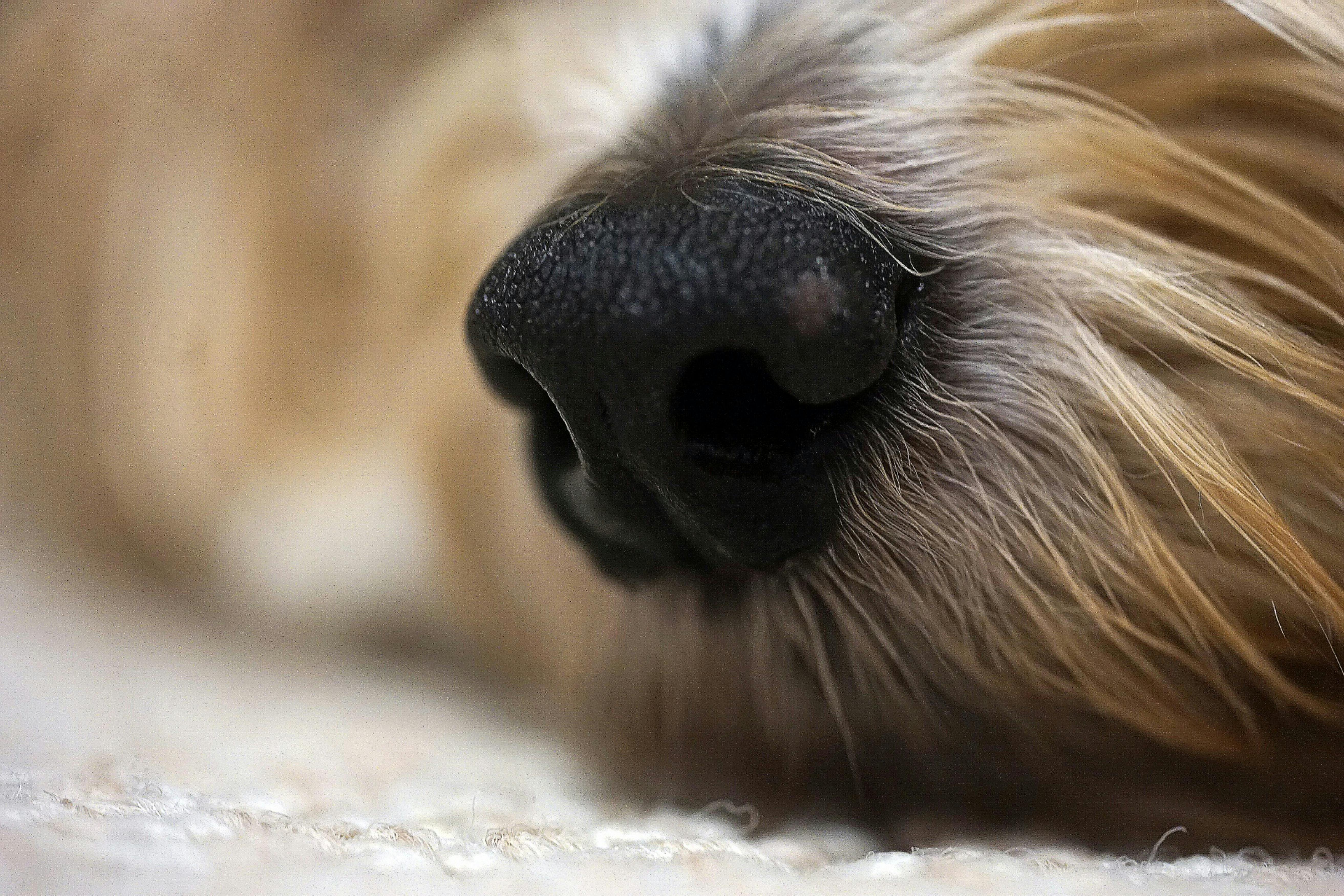
The role of moisture in a dog’s nose is quite fascinating, and it isn’t just for show. If you’ve ever wondered, “Why do dogs have wet noses?”, you’re not alone. This characteristic is not just cute; it plays a critical role in their sense of smell and overall health. Let’s dive deep into why a dog’s nose is wet and what that means for their senses.
The Science Behind a Wet Nose
Dogs have moist noses for a number of reasons, and it all starts with their anatomy. The surface of a dog’s nose is covered with a thin layer of mucus, which serves several purposes. Here’s what you need to know:
Improved Sense of Smell: A wet nose helps to trap scent particles. This is super important because dogs have an incredible sense of smell — it’s estimated to be anywhere from 10,000 to 100,000 times more sensitive than humans. When the nose is moist, it can capture more of these scent molecules, helping dogs identify smells more accurately.
Temperature Regulation: Just like sweating helps humans cool down, a dog’s wet nose helps them maintain their body temperature. When they breathe, moisture evaporates from the nose, helping to cool down their body.
Health Indicator: The condition of a dog’s nose can actually tell you a lot about their health. A dry, cracked nose might indicate dehydration or illness, while a healthy, moist nose usually means they’re in good shape.
Historical Context of Dog Noses
The evolution of a dog’s nose is linked to their ancestors. Wild canines relied on their sense of smell for hunting and survival. Over time, domesticated dogs have retained this trait. It’s worth noting that different breeds have different nose shapes, which can affect their sense of smell. For instance:
- Bloodhounds: Known for their exceptional tracking abilities, their long, droopy noses help capture more scents.
- Bulldogs: With a shorter snout, they may not have the same sniffing capabilities, but they still rely on their wet noses for basic functions.
What Happens When a Dog’s Nose Dries Out?
When a dog’s nose is dry, it can be a cause for concern. Here are some common reasons why a dog’s nose might be dry:
- Dehydration: If a dog isn’t drinking enough water, their nose can dry out.
- Health Issues: Conditions like fever or autoimmune diseases can lead to a dry nose.
- Allergies: Allergens like pollen or dust can irritate a dog’s nose, causing dryness.
How to Keep Your Dog’s Nose Healthy
Keeping a dog’s nose in good shape is important for their overall health. Here are some practical tips:
- Hydration: Ensure your dog has access to fresh water at all times. This helps maintain moisture not just in their nose, but in their overall body.
- Regular Vet Check-ups: Regular visits to the vet can help catch any potential health issues that could lead to a dry nose.
- Environmental Awareness: If your dog is in a dry environment, consider using a humidifier. This can help keep their nose moist and comfortable.
Fun Facts About Dog Noses
- Did you know that a dog’s nose print is as unique as a human fingerprint? No two dogs have identical nose prints.
- Dogs have around 300 million olfactory receptors in their noses, compared to a human’s 5 million.
Comparison of Dog Nose Types
Different breeds have distinct nose types, which can affect their sense of smell. Here’s a quick comparison:
| Breed | Nose Type | Smell Capability |
|---|---|---|
| Bloodhound | Long and droopy | Exceptional |
| Beagle | Medium length | Strong |
| Chihuahua | Short and flat | Moderate |
Practical Examples
Imagine a scenario where your dog is sniffing around in the park. His moist nose helps him identify scents from other dogs that have passed by, as well as food or other interesting smells. This ability to smell is vital for their social interactions and exploration of their environment.
In summary, the wetness of a dog’s nose is not merely a cute trait; it serves multiple crucial functions that contribute to their sense of smell, health, and overall well-being. Understanding why do dogs have wet noses can deepen your appreciation for your furry friend. So, next time you see your dog with that adorable, moist nose, remember the fascinating science behind it!
Dog Nose Myths Debunked: Wet Noses, Health, and Happiness Explained

Dogs are some of the most beloved pets in the world, and their wet noses, they often spark curiosity and questions. Many people thinks that a wet nose indicates a healthy dog, but there’s a lot more to it than just that. In this article, we gonna dive into the fascinating reasons behind why dogs have wet noses, debunk some common myths, and explore the relation between nose moisture, health, and happiness.
Why Do Dogs Have Wet Noses?
The reasons for dogs having wet noses is linked to both biology and behavior. Here are some of the main factors:
- Cooling Mechanism: Dogs can’t sweat like humans do. They rely on panting and the moisture on their noses to help regulate their body temperature. A wet nose can help with that process.
- Enhanced Sense of Smell: The moisture on a dog’s nose also helps to trap scent particles in the air. This enhances their ability to smell, which is vital for their survival and understanding of the world around them.
- Health Indicators: While many believe a wet nose indicates a healthy dog, it’s not always the case. A dog can have a dry nose yet still be perfectly fine, and a wet nose doesn’t guarantee health.
Common Myths About Dog Noses
There are several myths that surround the topic of dog noses. Let’s debunk some of them:
Myth: A Wet Nose Means a Healthy Dog
- While a wet nose can be a sign of good health, it’s not the only indicator. Dogs can be sick with a wet nose and healthy with a dry one.
Myth: Dogs’ Noses Should Always Be Cold
- Not all dogs have cold noses. A warm nose may simply indicate that the dog is relaxed or has been resting.
Myth: Dogs Have Wet Noses Because They Lick Them
- Although dogs do lick their noses, the moisture comes from their own body’s natural processes.
Myth: Dogs’ Noses Are Always Wet
- Some dogs naturally have drier noses due to their breed or health conditions.
The Science Behind Dog Nose Moisture
To understand why dogs have wet noses, it’s important to look at their anatomy and behavior. Dogs have specialized glands in their noses that produce mucus, which helps to keep their noses moist. This moisture is crucial for:
- Better Smelling: The wetness helps to absorb scents. It makes it easier for dogs to identify and recognize different smells.
- Temperature Regulation: The moisture evaporates, helping to cool the dog down when it’s hot.
Factors Affecting Dog Nose Moisture
Several factors can influence the moisture level of your dog’s nose:
- Environmental Conditions: Dry weather can lead to drier noses.
- Health Conditions: Certain health issues, like allergies or infections, can also affect nose moisture.
- Hydration Levels: A well-hydrated dog is likely to have a moist nose.
Practical Tips for Dog Owners
Here are some practical tips for dog owners concerning their pet’s nose health:
- Regular Check-ups: Make sure to take your dog to the veterinarian for regular health check-ups. They can identify any potential issues with your dog’s nose or overall health.
- Monitor Changes: Keep an eye on any sudden changes in the moisture or temperature of your dog’s nose. If it becomes persistently dry or cracked, consult a vet.
- Stay Hydrated: Ensure your dog has access to fresh water at all times. Hydration is key for maintaining moisture in their noses.
Fun Facts About Dog Noses
- Dogs have about 220 million olfactory receptors in their noses, compared to humans who have around 5 million.
- The shape and structure of a dog’s nose varies widely among breeds, which can affect their smelling ability.
- Dogs can even detect certain diseases such as cancer through their sense of smell.
Understanding the role of a dog’s wet nose can help pet owners better appreciate their furry friends. It’s more than just a cute feature; it serves critical purposes for their health and happiness. While it’s easy to get caught up in the myths surrounding dog noses, knowing the facts allows us to care for our pets more effectively. So, the next time you see your dog with a wet nose, remember all the incredible science behind it!
The Connection Between a Dog’s Wet Nose and Their Emotional State

Dogs are beloved companions for many, and their wet noses often puzzles and intrigues both pet owners and animal lovers alike. Why do dogs have wet noses? This question leads us to explore not only the science behind it but also the fascinating connection between a dog’s emotional state and their nasal moisture. Many people may not realize that a dog’s nose can say a lot about how they feel.
The Science Behind a Dog’s Wet Nose
First off, a dog’s nose is designed for a reason. It is moist because it helps to enhance their sense of smell. Dogs have an incredible olfactory system, which is far superior to that of humans. A wet nose can help capture scent particles in the air. When a dog sniffs, their wet nose allows the scent to stick better, leading to more accurate detection.
- Dogs’ noses have special glands that produce mucus.
- The moisture helps to absorb scent particles.
- This is why dogs are often used in search and rescue missions, as well as in sniffing out drugs or explosives.
Emotional Indicators from Wet Noses
Now, let’s dive deeper into the connection between a dog’s wet nose and their emotions. Just like humans express feelings through body language and facial expressions, dogs also show their emotions through their noses. A wet nose generally indicates a healthy state and can sometimes reflect their emotional state.
What Different Nose Conditions Might Mean:
- Cold and Wet: Often, this indicates that a dog is relaxed or feeling good. It’s a good sign of health.
- Warm and Dry: If a dog’s nose feels warm and dry, it might be feeling stressed, anxious, or even ill.
- Excessively Wet: Sometimes, if a dog has an overly wet nose, it might be drooling or excited, especially during playtime or when seeing their owner after a long day.
Historical Context
Historically, dogs have been companions to humans for thousands of years. Various cultures believed that a dog’s wet nose had mystical properties. Ancient Egyptians revered dogs, thinking that their wet noses were a sign of good luck. In some folklore, it was said that a dog could sense human emotions, and indeed, modern studies show that dogs can recognize human feelings through scent.
The Anatomy of a Dog’s Nose
Let’s break down the anatomy of a dog’s nose to understand why it’s so important.
- Nasal Cavity: Contains millions of scent receptors.
- Moisture Glands: Produces mucus that keeps the nose wet.
- Vomeronasal Organ: Helps dogs detect pheromones and chemical signals.
Practical Examples of Nose Behavior
Understanding your dog’s nose behavior can help you interpret their emotional state. Here are some practical examples:
- When your dog greets you: If they come running with a wet nose, it often means they are excited to see you!
- During playdates: A wet nose can indicate joy and eagerness, especially when they are wagging their tails.
- When they are anxious: If your dog’s nose is dry and warm, it might be a good idea to check if they are feeling stressed or scared.
Fun Facts About Dog Noses
Here are some interesting facts about dog noses:
- Dogs have about 220 million scent receptors, while humans have about 5 million.
- A dog’s sense of smell is 40 times better than that of an average human.
- The wetness of their noses can vary based on the environment, so don’t be alarmed if it changes.
Why Do Dogs Have Wet Noses?
In summary, dogs generally have wet noses for a variety of reasons, including:
- Enhancing their sense of smell
- Signaling health and emotional state
- Communicating with humans and other animals
Understanding these aspects can deepen the bond between you and your furry friend. It’s not just about having a pet; it’s about forming a connection and knowing how to interpret their behaviors.
So, the next time you wonder why do dogs have wet noses, remember that it’s not just a quirky trait; it’s a window into their world, reflecting their health and emotions. Keeping an eye on your dog’s nose can be an essential part of understanding how they feel and maintaining their overall well-being.
How Breed Differences Impact Nose Moisture: What Every Dog Owner Should Know
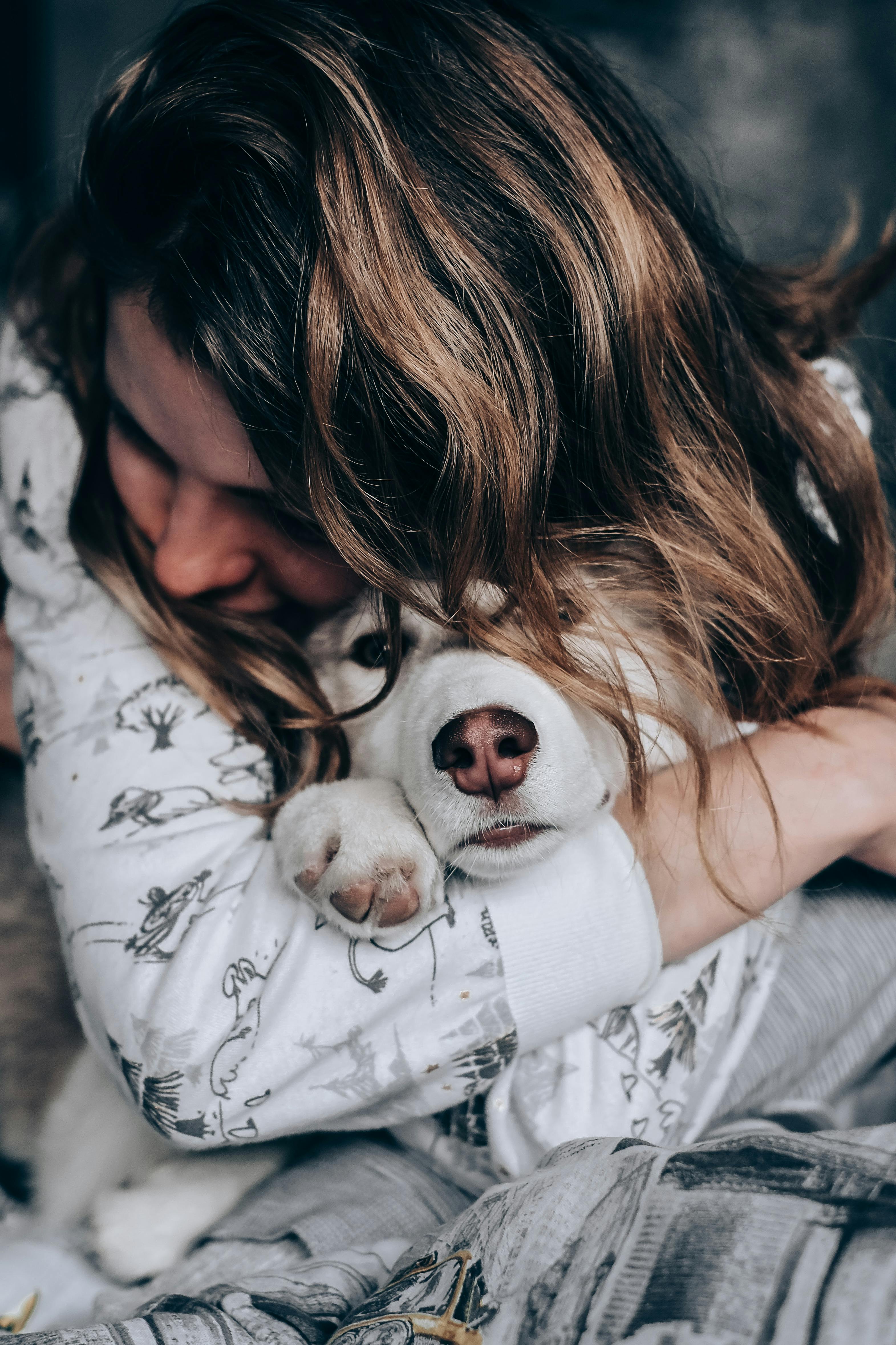
Dogs are known for many things, but one of the most interesting features they have is their wet noses. Ever wonder why dogs have wet noses? It’s not just an adorable quirk; there are actually a lot of fascinating reasons behind it. Understanding how breed differences impact nose moisture can help every dog owner appreciate their furry companions even more.
The Science Behind Wet Noses
Firstly, a dog’s nose has a unique structure that makes it a crucial tool for their survival. The skin on a dog’s nose is not only moist but also sensitive. This sensitivity helps dogs to pick up scents better. The moisture on the nose helps to trap scent particles in the air, making it easier for dogs to smell.
- Nasal Mucus: Dogs produce mucus that keeps their noses moist, which is important for their sense of smell.
- Sweat Glands: Unlike humans, dogs don’t sweat through their skin. Their sweat glands are primarily located in their paw pads, so they rely on their noses to help regulate their body temperature.
How Breed Differences Impact Nose Moisture
Different dog breeds have various characteristics that can affect the moisture content of their noses. Breeds with shorter snouts, like Bulldogs and Pugs, may have less surface area for moisture retention compared to longer-snouted breeds like Greyhounds. Here is a comparison of how some breeds differ:
| Breed | Snout Length | Nose Moisture Level | Common Health Issues |
|---|---|---|---|
| Greyhound | Long | High | Respiratory issues |
| Bulldog | Short | Moderate | Breathing difficulties |
| Beagle | Medium | High | Ear infections |
| Dachshund | Long | High | Back problems |
Why Do Dogs Have Wet Noses? Discover The Fascinating Reasons!
Enhanced Sense of Smell: As mentioned earlier, a wet nose helps dogs smell better by trapping scent particles. This is why dogs are excellent at tracking and detecting things.
Temperature Regulation: Dogs can’t cool down like humans do by sweating. Their wet noses help in dissipating heat. When a dog is overheated, they will often pant, and having a moist nose helps in regulating their body temperature.
Health Indicators: The moisture levels in a dog’s nose can be a good indicator of their health. A healthy dog typically has a moist nose. If it becomes dry or cracked, it might be a sign of dehydration or an illness.
Behavioral Insights: Dogs often lick their noses to keep them moist, and this behavior can also indicate curiosity or excitement. If a dog is frequently licking their nose, it might be worth observing their behavior closely.
Moisture Levels: What’s Normal?
Many dog owners wonder what’s considered normal when it comes to nose moisture. Generally, a healthy dog will have a nose that feels cool and moist to the touch. However, there are variations based on breed, age, and activity level.
Some dogs might have a drier nose after sleeping or during hot weather, and that’s generally nothing to worry about. But if you notice persistent dryness or cracking, it could be time to consult a vet.
Practical Tips for Dog Owners
Hydration: Make sure your dog is drinking enough water, especially in hot weather. Dehydration can lead to a dry nose.
Regular Vet Check-ups: Keep up with regular vet check-ups to ensure your dog’s health is on track. Discuss any changes in nose moisture with your veterinarian.
Watch for Other Symptoms: If your dog’s nose is dry and they show other symptoms, like lethargy or vomiting, it’s important to seek veterinary help.
Environment Matters: Dry air from heaters or air conditioning can also affect your dog’s nose moisture. Consider using a humidifier during dry seasons.
Final Thoughts
Understanding why dogs have wet noses and how breed differences impact moisture levels can enhance any dog owner’s knowledge. This fascinating aspect of canine biology not only serves practical purposes but also enriches the bond between you and your furry friend. Keeping an eye on your dog’s nose can provide insights into their overall health, helping you make informed decisions for their well-being. So, the next time you see your dog’s wet nose, remember there’s a whole lot more going on than just cuteness!
7 Surprising Facts About Dog Noses That Will Amaze You
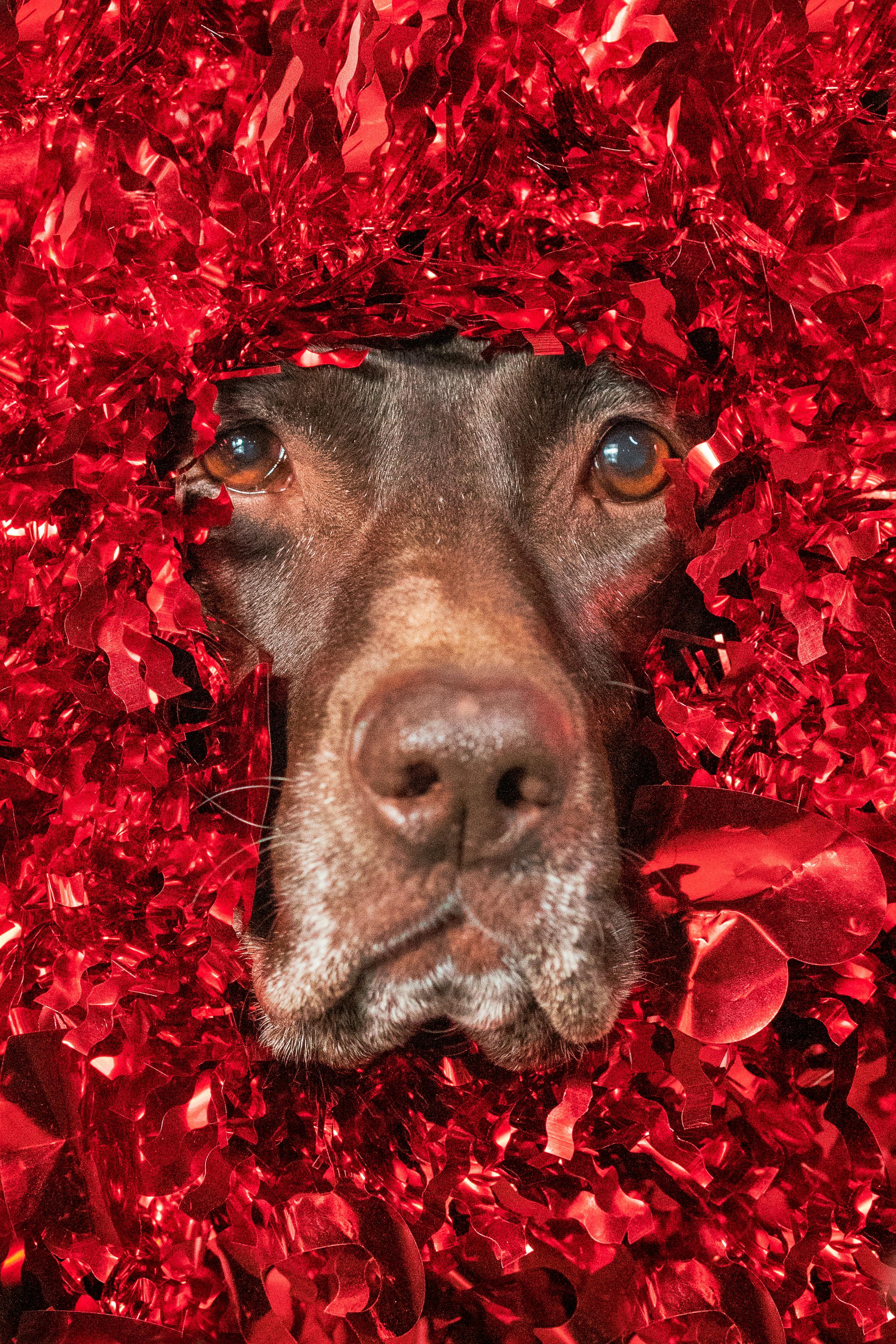
Do you ever wonder why dogs have wet noses? It’s a common question among dog lovers, and it turns out there’s a lot more to this than meets the eye. Dog noses are not just cute; they come with a fascinating set of features and functions. Here, we will dive into 7 surprising facts about dog noses that might just amaze you.
1. Dogs Have More Smell Receptors than Humans
Did you know that dogs have around 300 million smell receptors in their noses? In contrast, humans only have about 5 million. This incredible difference means dogs can detect scents at incredibly low concentrations. For example, they can smell a drop of blood in an Olympic-sized swimming pool. This is why dogs are often used in search and rescue missions or to detect drugs and explosives.
2. Wet Noses Help with Smell
Ever touch a dog’s nose and notice it’s wet? There’s a reason for this! The moisture on a dog’s nose helps to capture scent particles more effectively. When the nose is wet, it can absorb more of these particles, enhancing their sense of smell. This is why you’ll often see dogs sniffing around, as they’re using their wet noses to gather information about their environment.
3. Dogs’ Noses are Unique Like Fingerprints
Just like human fingerprints, every dog has a unique nose print. The patterns of ridges and creases in a dog’s nose are different for each individual. This uniqueness can even be used for identification purposes, although it’s not as common as fingerprinting in humans.
4. The Temperature of a Dog’s Nose Can Indicate Health
Many people think that a warm nose means a dog is sick, but that’s not always true. A dog’s nose temperature can vary throughout the day. Generally, a cool, wet nose is a sign of a healthy dog, while a dry or excessively warm nose can sometimes indicate health issues. However, other symptoms should also be considered when assessing a dog’s health.
5. Dogs Use Their Noses to Communicate
Dogs are social animals, and they use their noses to communicate with each other. When dogs meet, they often sniff each other’s noses and rear ends. This behavior allows them to gather information about the other dog, like their age, health, and even mood. It’s their way of saying “Hello!” in the canine world.
6. Scent Memory is Strong in Dogs
Dogs have an impressive scent memory. They can remember scents for a long time, which aids in their ability to track and find things. This is why trained dogs can follow a scent trail even if it’s days old. Their brains are wired to store and recall scents, making them excellent at jobs that require scent detection.
7. The Shape of a Dog’s Nose Affects Their Smell
Not all dog noses are created equal. The shape of a dog’s nose can influence how well they can smell. Breeds with longer noses, like Bloodhounds, have a greater surface area for scent receptors. This gives them a superior sense of smell compared to breeds with shorter noses, like Bulldogs. The shape and size of a dog’s nose can thus dictate its olfactory capabilities.
Quick Facts About Dog Noses
- Dogs have about 300 million olfactory receptors.
- A wet nose helps to enhance smell.
- Each dog’s nose print is unique.
- Nose temperature can indicate health, but it’s not definitive.
- Dogs communicate through scent.
- They have strong scent memory.
- Nose shape affects smelling ability.
Interesting Comparisons
| Feature | Dogs | Humans |
|---|---|---|
| Smell Receptors | 300 million | 5 million |
| Nose Print Uniqueness | Yes | No |
| Scent Memory | Strong | Weak |
| Communication Method | Scent | Speech |
So, the next time you ask yourself, “Why do dogs have wet noses?” remember all these amazing reasons. Their wet noses are not just an adorable feature; they’re essential tools for understanding the world around them. Whether they are sniffing out a favorite treat or greeting another furry friend, dogs rely on their noses to navigate life.
Understanding the science behind dog noses can deepen your appreciation for your furry friend. It’s incredible to think about how much they perceive through their sense of smell. So, cherish those moments when your dog gives you a wet-nosed nudge, as they are simply trying to connect with you in their unique way.
Caring for Your Dog’s Nose: Tips for Maintaining Moisture and Health
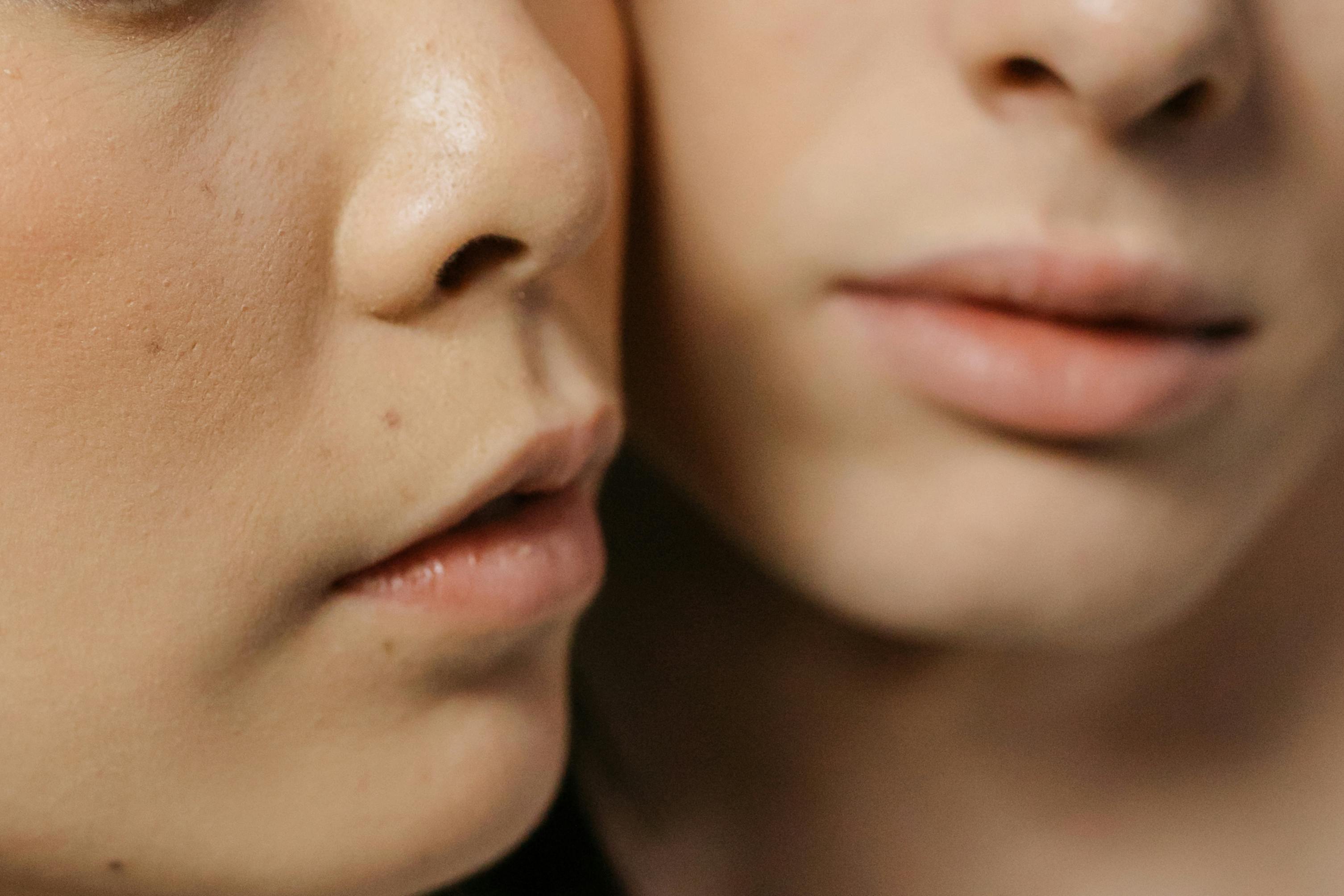
Every dog owner knows that their furry friend’s nose is often cool and wet. But why do dogs have wet noses? It’s not just an adorable feature; it serves several important functions. In this article, we will explore the reasons behind those moist noses, offer tips for maintaining your dog’s nose health, and discuss how you can keep it hydrated and happy.
Why Do Dogs Have Wet Noses?
First things first, let’s delve into the science behind those wet noses. Dogs have moist noses mainly because it helps them to smell better. The moisture on their noses captures scent particles from the air, which enhances their sense of smell. Dogs possess an extraordinary olfactory system, and a wet nose is like a built-in tool to improve this ability.
Here are some fascinating facts about dog noses:
- Scent Detection: Dogs have up to 300 million scent receptors compared to a human’s 5 million. A wet nose aids in trapping more scent particles.
- Temperature Regulation: A wet nose helps dogs cool down. They can’t sweat like humans, so moisture evaporating from their noses helps regulate body temperature.
- Health Indicator: A dog’s nose can indicate their health. A dry, cracked nose might signal dehydration or illness, while a moist nose usually suggests hydration.
Keeping Your Dog’s Nose Healthy
Maintaining the health of your dog’s nose is crucial for their overall well-being. Here are some simple yet effective tips for keeping your dog’s nose moisturized and healthy:
- Hydration is Key: Always ensure your dog has access to fresh, clean water. Dehydration can lead to a dry nose.
- Avoid Irritants: Keep your dog away from smoke, harsh chemicals, or excessive dust, which can dry out their nose.
- Use Nose Balm: Just like humans, dogs can benefit from moisturizing balms. Look for natural, pet-safe options that can help combat dryness.
- Regular Vet Check-ups: Periodic vet visits can help monitor your dog’s health, including their nose condition.
Signs of Nose Problems
Being vigilant about your dog’s nose health is important. Here are some signs that might indicate an issue:
- Cracking or Bleeding: This can indicate dehydration or an underlying health issue.
- Discoloration: A change in color might suggest allergies or infections.
- Excessive Dryness: If your dog’s nose is consistently dry, it’s worth a trip to the veterinarian.
Common Myths About Dog Noses
There are several misconceptions about dog noses that many people believe. Let’s debunk some of them:
- Myth 1: A cold nose means a healthy dog. This isn’t always true. Temperatures can vary based on activity and environment.
- Myth 2: All dogs have wet noses. While most do, there are exceptions, especially in certain breeds.
- Myth 3: A dry nose means illness. While it can be a sign, it’s not the only indicator of health problems.
How to Check Your Dog’s Nose
Checking your dog’s nose regularly can help you catch potential issues early. Here’s how to do it:
- Observe Regularly: Take notice of your dog’s nose moisture level. Is it consistently dry or wet?
- Feel for Temperature: Gently touch your dog’s nose. Is it cool to the touch? If not, it might be worth getting your vet’s advice.
- Look for Cracks: Inspect for any signs of cracking or bleeding, which can indicate a health problem.
Fun Facts About Dog Noses
Did you know that dogs’ noses are as unique as human fingerprints? Each dog has its own distinct nose print. Here are more interesting tidbits:
- Dogs Can Detect Diseases: Some trained dogs can detect diseases like cancer and diabetes through scent.
- Noseprints as Identification: Some animal shelters and organizations use noseprints to identify dogs, just like fingerprints for humans.
- Dogs and Smell Memory: Dogs can remember scents for years, allowing them to recognize people and places long after they’ve been absent.
Caring for your dog’s nose is essential, not just for their health, but also for their happiness. Moisture plays a key role in their sense of smell and overall well-being. By understanding why dogs have wet noses and how to keep them healthy, you can ensure that your furry friend stays happy and comfortable. So, keep those noses moist and enjoy the bond you share with your beloved pet!
Conclusion
In conclusion, the wet noses of dogs serve several important functions that are crucial to their health and behavior. Firstly, the moisture on their noses enhances their sense of smell, allowing them to detect scents more effectively, which is vital for their communication and navigation. Additionally, a wet nose plays a role in thermoregulation, helping dogs cool down and maintain a comfortable body temperature. The presence of moisture also indicates a healthy, functioning immune system, as it helps to trap pathogens and allergens. Understanding these fascinating aspects of canine physiology not only deepens our appreciation for our furry friends but also highlights the importance of regular veterinary check-ups to ensure their overall well-being. So, the next time you give your dog a scratch behind the ears, take a moment to admire that wet nose and all it represents. Consider sharing this knowledge with fellow dog lovers to spread awareness about the remarkable traits of our loyal companions.

